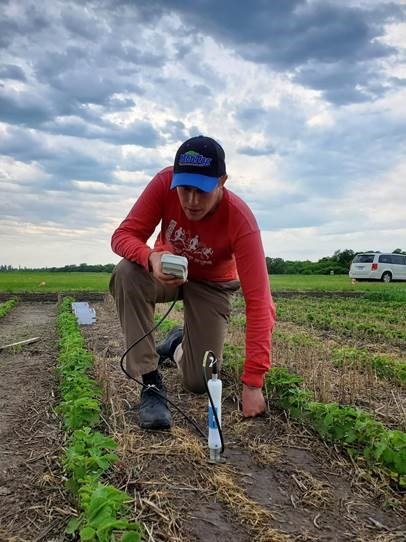The 2020 Prairie Cover Crop Survey captured how cover crops are being utilized across the prairie provinces. Researchers found that cover crops are gaining traction in the Prairies, as they can be grown in a wide range of locations and environments.
Adoption of this production method holds the potential to build soil health and store carbon in the soil. Groundcover maintained year-round provides greater protection from soil and wind erosion, provides food for soil microbes, and builds up soil organic matter. Cover crops could increase the profitability and resilience of Prairie farms by increasing yield, nutrient cycling, water efficiency, and weed protection.
Between October 2020 and April 2021, UM researchers led by Dr. Yvonne Lawley and Callum Morison from the Department of Plant Science surveyed farmers using cover crops. The farms they surveyed ranged in both size and scale of operations and types of production.
The survey collected responses from 281 producers who planted a cover crop in 2020. A total of 102,539 acres of cover crops were grown on farms across the Prairies during the fallow season of 2020-2021, with 1/3 of the farms from each prairie province (Manitoba, Alberta, Saskatchewan).
“As early adopters of cover cropping on the Prairies, we’ve found it to be a bit of a lonely pursuit,” said Kevin Nickle, a grain farmer in the Red River Valley, Manitoba, and a participant of the survey. “This survey demonstrates that there is widespread participation and a general desire to continue. There is so much to learn in this realm, and this survey may help inform researchers and practitioners on the specific questions to ask.”
According to the survey's findings, 81% of farms that responded have observed a benefit as a result of growing cover crops, with 54% experiencing improved soil health as a result. Most farms (71%) reported noticing benefits within three years of growing cover crops. However, 30% of respondents experienced problems with growing season shortening, while 27% had trouble establishing cover crops due to the prairie climate's insufficient moisture in the fall.
One of the most interesting outcomes of the survey was tied to cover crop’s relation to profit on prairie grain operations. “Only 4% of farms that responded reported that cover crops resulted in a drop in their net farm profit. A much higher 24% identified that cover crops resulted in no change to their net profit, and a further 24% identified that they saw an increase in far," Reads the news release.
The report also identified that farmers would be much more likely to consider utilizing cover crops if financial incentives were to be introduced, whether through carbon-storing payments or tax credits.
Lead researcher Yvonne Lawley shared that the project reflected a promising future for the use of cover crops in the prairies. The full report can be accessed at the University of Manitoba Agriculture & Food Knowledge Exchange website: https://umanitoba.ca/agricultural-food-sciences/make/make-ag-food-resources#crops.




